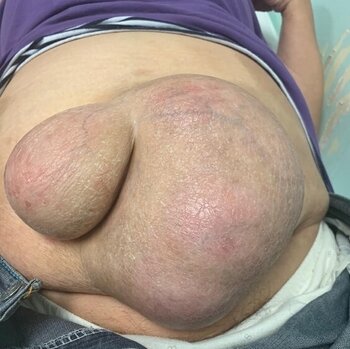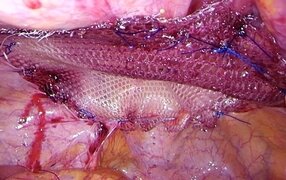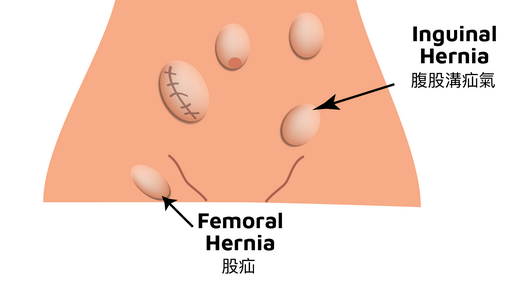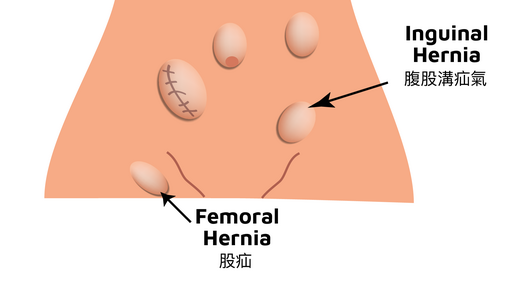Hernia
Incisional Hernia
HerniaHernias

Large incisional hernia
Incisional hernias occur when the fascia of the abdominal wall does not heal well after a surgical incision. These hernias more frequently develop in the setting of obesity, coughing, straining, infection, malnutrition, steroid or chemotherapy administration, and emergency surgery.
An incisional hernia can develop any time after surgery. These hernias gradually increase in size and may become more symptomatic. The size of an incisional hernia can vary significantly. Small hernias have greater risk of organs being stuck while larger hernias can become more symptomatic as the hernia increase in size.
Treatment

Laparoscopic inguinal hernia repair
Surgery for incisional hernias can be simple or complex and it can be performed with open or laparoscopic surgery. Hence, detailed evaluation and determination of the correct treatment is required for each patient. Small hernias may be treated by open or laparoscopic surgery whilst larger hernias may require more complex repair. Usually a mesh will need to be inserted to repair the hernia and this also reduce the chances of recurrence.
Complex cases are those with prior failed repairs, coexisting ostomies, loss of abdominal domain. These patients are all individually evaluated and repair is personalized to maximize the chance of successful repair. Review of prior operative reports and prior abdominal wall imaging is often helpful to help tailor each operation and should be brought to the initial consultation or submitted for review.














